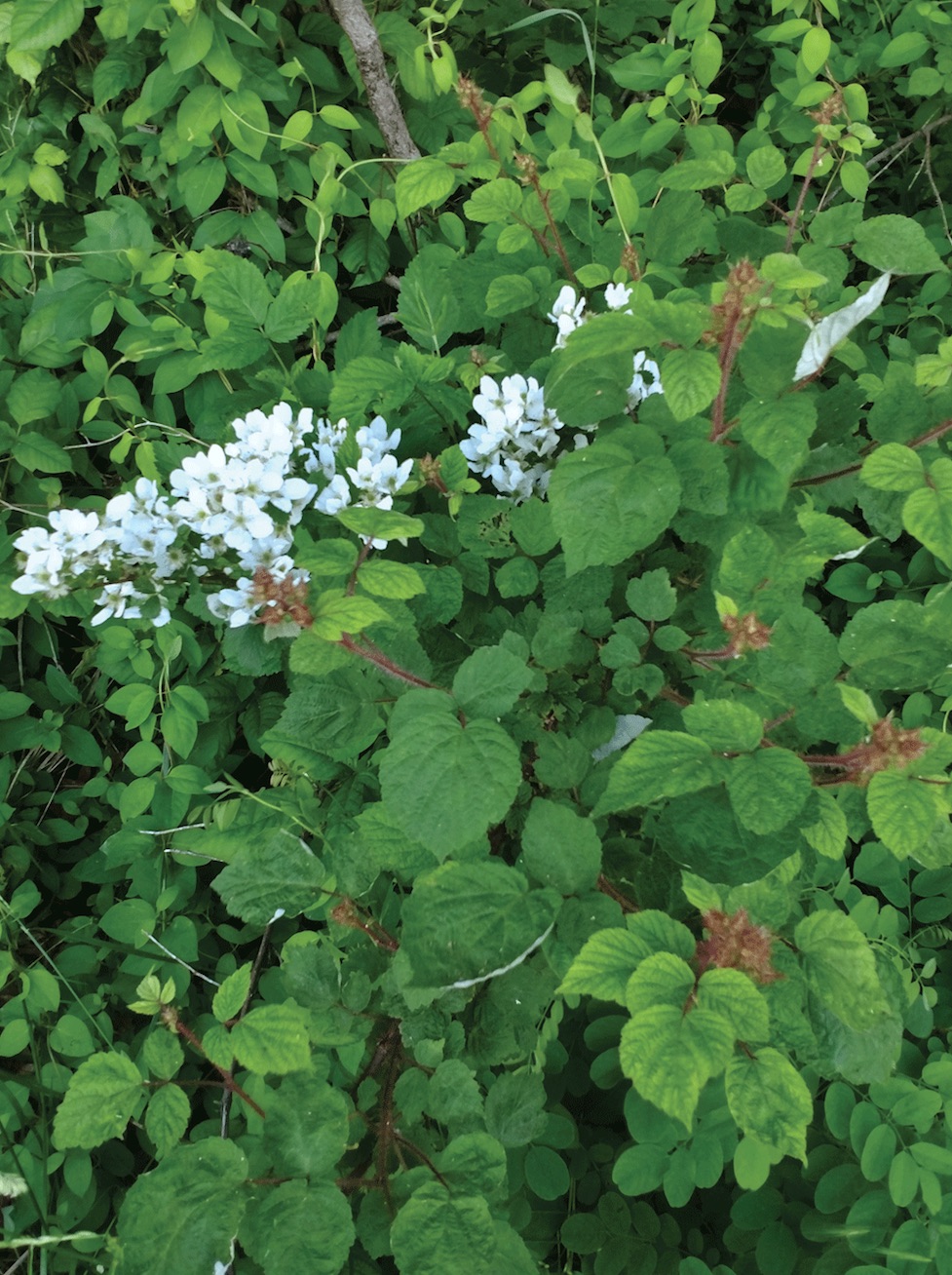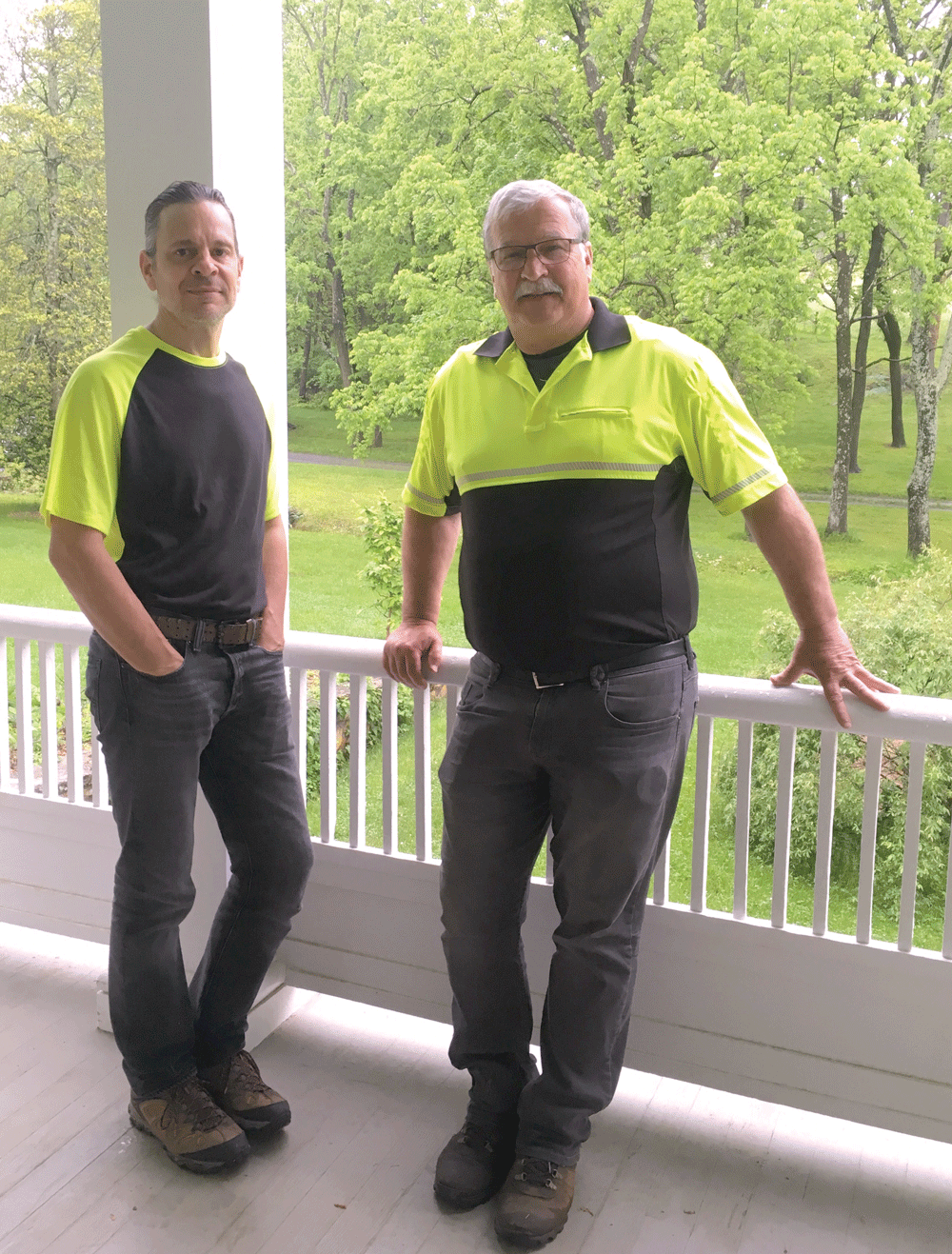Know Your Trees

By Ashley Bommer Singh
Some say that Columbus was sent to find the New World not for gold but to discover new forest lands after Spain all but lost her native forests to logging. He would have done well to land in Virginia, which was heavily forested with pines and hardwoods. If you live around Middleburg, chances are you walk or ride through our beautiful forests on a regular basis. How are our forests and woodlands doing?
I recently had a chance to chat with James Donegan, a tree expert and owner of Donegan’s Tree Service, and Robert Ray PhD, a botanist and research specialist at Howard Hughes Medical Institute, at Ray’s historic 1730s estate in Waterford. Their mission there is to preserve the diversity of native species and turn the surroundings back into a proper Atlantic forest.
While native populations made heavy use of these forests, early colonists and pioneering Americans managed to destroy most East Coast forests in the 1800s. America’s forests only started to recover with the introduction of modern forestry practices in the 20th century. The Virginia Department of Forestry, for example,
was established in 1914.

Ashley Bommer Singh.
Having been mistreated in the past, Virginia’s forests are generally moving through the stages of “succession,” coming back from abandoned fields or fire or long-ago clear cutting. Virginia today is about 62 percent forest—15.8 million acres. That’s the good news. But, I often have been frustrated by the thick bramble of undergrowth that seems to take over the forest and make it impassable. My dog constantly charges through the brambles and ends up with cuts on her ears and face. The first time, I thought she’d mixed it up with a coyote. I learned from Donegan and Ray that the source is invasive species that disrupt the natural progress of the forest.
Wineberry is among the worst offenders. A relative of blackberry and raspberry that was brought to America as rootstock in the late 1800s, it spreads not just from seed but by re-rooting wherever the tips of its long canes touch the ground. The ensuing mess—call it a bramble or a thicket or a briar patch—makes the forest less hospitable to native wildlife and chokes out the native plant species that should be popping up.
A surprising two-thirds of Virginia’s forest is in private hands, including the 53 wooded acres owned by Ray. Working with Donegan, Ray has been painstakingly removing large sections of wineberry and other invasive plants like the poisonous jet berry from his property. Eliminating invasive plants will give breathing space to the native undergrowth and hardwoods like hickory, beech and old oak trees as well as the forests’
struggling pines.
Restoring forests and planting and managing trees is important to create a vibrant ecosystem for our wildlife and soil retention. My neighbor, Christiane Runyan, whose woods I often walk through, is also the author of “Global Deforestation” and a research scientist at Johns Hopkins University. She says, “Some native species have experienced substantial declines over recent years due to pest and insect infestations.” But she’s confident the focus of scientists, government agencies and non-governmental organizations like land conservancies will help improve forest health even in the face of new pests and a changing climate.
Making sure trees are healthy has been Donegan’s mission in life. Three decades ago, after a 30-hour snowplow marathon and with a baby on the way, he decided to dedicate himself to what he loved most, “working in trees.” Donegan started his work in the nation’s capital and soon became captivated by the native and exotic trees planted all around the District. From the lindens down Massachusetts Avenue to clouds of cherry trees around the tidal basin to poplars down Pennsylvania Avenue and Japanese plum trees in Dumbarton Oaks, Washington has long been known as the City of Trees.

In 1984, Donegan got his big break, winning a bid to tend to 480 trees in the surrounding parks on the White House Grounds. He hired 13 people and got to work. Forty-five days later the trees were clipped, pruned and moving towards a healthy year. Next came The Naval Observatory and the Vice President’s residence. When the late (and gracious) Barbara Bush spotted him up in a 200-year-old oak, he heard her call out, “You be careful up there.” And just then he slipped. Fortunately, he was not hurt.
He was also caregiver to the South Lawn’s Jackson Magnolia, a long standing and long-ailing giant that has watched over 39 presidencies since the newly widowed President Andrew Jackson brought it from his Tennessee home. Descendants of the tree have been planted by presidents and its seeds presented to friends all over the country and around the world. Sadly, a substantial portion of the Jackson Magnolia had to be removed a few months ago due to rot and weakness that made it likely to fall.
Saving trees like that magnolia makes Donegan’s heart sing. When a client asked him to take down a 150-year-old willow oak, Donegan told him, “You need to give me a really good reason why I am taking this down.” The response didn’t pass muster, and Donegan made his case to save the tree with some crown cleaning and TLC.
I think about my own property and the trees I can identify and those I cannot. You almost have to be a detective. From the bark, to the leaves, to the flowers, to the fruit, all characteristics give clues. Ray laughed and said that his colleagues in the lab used to use him as field guide—20 questions to identify any species.
The more we know about our trees, the more we can appreciate and care for them. Trees are the backbone to any landscape. I was excited to add a weeping cherry to my property this year for the blossoms that will hopefully emerge next year and for decades to come.
Whether you have one tree or own acres of Virginia forest, look up and be proactive. Trees can stay much healthier with regular pruning and attention. Your fruit trees can have fewer pests and more bountiful harvest. And removing invasive plants can help native trees and plants thrive and allow you to spend much more time wandering the woods. ML
SaveSave


